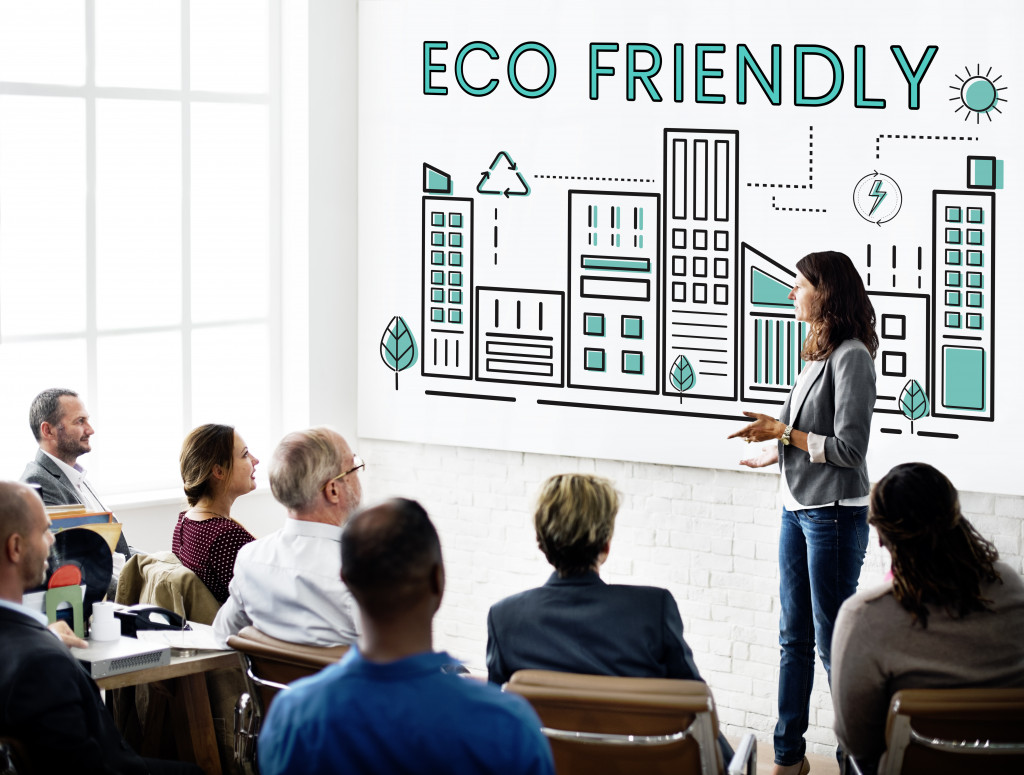For many businesses, going green isn’t a choice but a necessity. Green initiatives are becoming increasingly important as people become more aware of the impact some activities have on the environment. And to stay competitive and ensure that your business can grow and evolve in this changing landscape, it is essential to implement eco-friendly practices in everything you do.
There are different ways to integrate change into your business operations. Here are a few ideas to get you started:
Switch to Reusable Energy Sources
In recent years, many businesses across the globe have begun to make the switch from traditional energy sources to reusable ones. This shift comes in response to growing concern over the impact of fossil fuels on the environment and the increasing demand for sustainable alternatives. At first glance, this transition may seem like a daunting prospect. However, it is pretty simple and achievable with a few fundamental adjustments.
For starters, businesses can make their offices more energy-efficient by upgrading outdated equipment and using smart lighting systems that automatically turn off whenever they are not in use. In addition, companies can increase their reliance on renewable energy sources such as solar panels or wind turbines. These technologies help reduce greenhouse gas emissions and give businesses cost savings over the long term due to their lower operating costs.
Overall, by equipping themselves with the right tools and strategies, businesses can weather the switch to cleaner, more sustainable energy sources without losing momentum or compromising productivity.
Practice Healthy and Eco-Friendly Habits
Practicing healthy and eco-friendly habits in the workplace is good for the environment. Plus, it can also boost employee morale and productivity.
There are a few simple ways to make your office more sustainable. Encourage employees to carpool, take public transportation, or walk or bike to work. You can also set up a recycling program for paper, plastic, and metal waste. Consider investing in energy-efficient office equipment, such as LED lighting and low-energy electronics. Promote reusable dishes and utensils in the break room, and encourage employees to bring their reusable water bottles from home. Host regular cleanups of your office space and encourage employees to compost organic waste.
You can create a more sustainable workplace that benefits both the environment and your employees by taking these simple steps.

Educate Your Employees and Customers
When running a business, it’s crucial to make sure that your employees and customers are well-educated about sustainable practices in the workplace. By educating employees and customers about these issues, you can help create positive behaviors that benefit both the environment and your bottom line.
You can use several strategies to educate your stakeholders about these practices, including setting up informational webinars and presentations, developing educational materials like infographics or fact sheets, and partnering with green organizations or community groups to share information.
When you incorporate these strategies into your business model, you’ll be helping the environment and convincing people to switch to your products or become long-term partners in achieving sustainability goals. So if you’re looking for ways to protect our planet while growing your business simultaneously, don’t hesitate to educate your employees and customers.
Develop Reactive and Proactive Sustainability Activities
Reactive sustainability activity is any steps done after an environmental impact has occurred. One great example of this is a hydrocarbon remediation process. It involves cleaning up a hydrocarbon spill after it has already happened. There are many other examples of reactive sustainability activities, but hydrocarbon remediation is one of the most common.
While it’s crucial to have reactive sustainability activities in place to clean up after an environmental impact has occurred, it’s equally important to have proactive sustainability activities in place to prevent the concern from happening in the first place.
You can do proactive sustainability activities before an environmental impact occurs. For example, instituting a no-idling policy at a hydrocarbon production facility is a proactive measure that can help to prevent hydrocarbon spills from occurring in the first place.
Developing a mix of proactive and reactive sustainability activities is the best way to create a sustainable workplace. By taking measures to prevent environmental impacts and having a plan to clean up after they occur, you can create a sustainable workplace that will minimize its ecological footprint.
The above eco-friendly initiatives are a great way to make your business more sustainable. Implementing these green practices into your company culture can positively impact the environment while creating a more productive, guilt-free, and engaged workforce. So if you’re looking for ways to create a more eco-friendly workplace, start by implementing some of these simple strategies and watch your business thrive.

